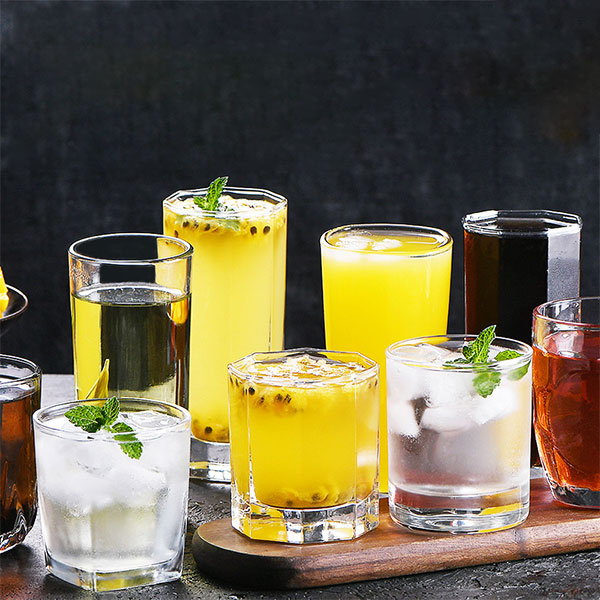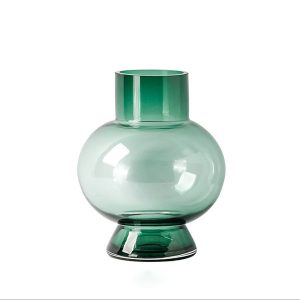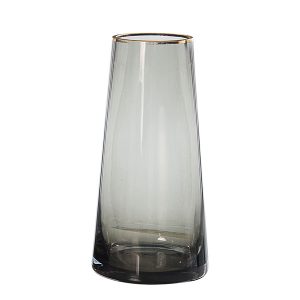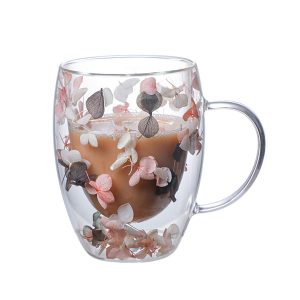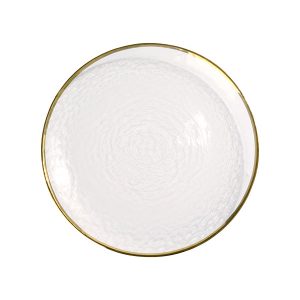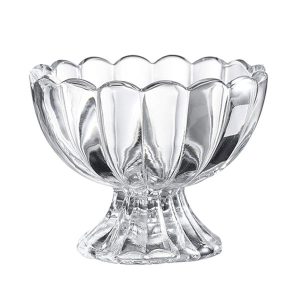Don’t worry about chemicals being absorbed into their stomachs, when using the Glass Drinking Cups. The glass contains no organic chemicals during the firing process. Moreover, the glass surface is smooth and easy to clean, and bacteria and dirt are not easy to breed on the wall of the cup, so it is the healthiest and safest for people to drink from glass cups.
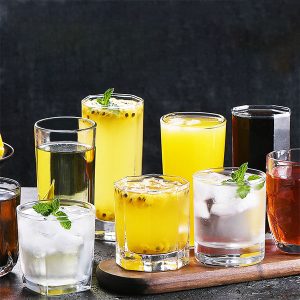
Are you lost among countless styles of cups and don’t know how to choose? Have you forgotten to maintain your drinking cup after using it and don’t know how to maintain it? This blog will help you choose the right cup. Maintain your Glass Drinking Cups and protect your health.
Glass Drinking Cups Material
There are many common Glass Drinking Cups material. Crystal clear high borosilicate glass, noble and elegant lead glass, economical soda-lime glass, environmentally friendly and energy-saving borosilicate glass, strong and durable tempered glass, exquisite crystal glass. These materials have different characteristics and Each has advantages and disadvantages, which will be analyzed.
1) High Borosilicate Glass
When selecting Glass Drinking Cups, you should choose heat-resistant glass products with high transparency. Among them, high borosilicate glass must be the first choice. It is a highly heat-resistant glass material with excellent heat resistance and chemical stability. Its advantage is that it can withstand temperature changes of sudden cooling and heating, and is suitable for making tableware and hot water kettles. Moreover, the light transmittance of high borosilicate glass is good, the thickness is uniform, and the sound is crisp. However, the price of borosilicate glass is high, the production process is complicated, and the market share is not high.
2) Soda-Lime Glass
The Glass Drinking Cups material has high heat resistance and chemical stability, so it is widely used in making tableware and wine glasses. However, due to its large coefficient of thermal expansion, cracking may occur when the temperature changes. When using soda-lime glass, pay attention to the temperature difference. Do not exceed 50°C generally. Its price is relatively low and we accept wholesale and customization, so it has a high market share.
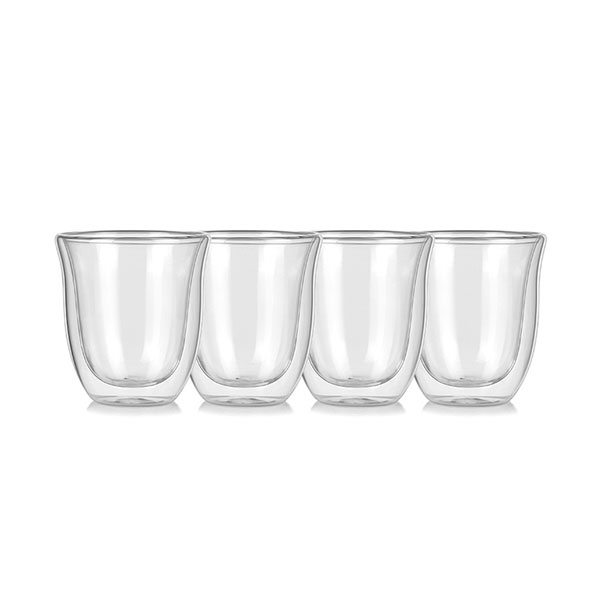
3)Glass Drinking Cups Made Of Other Materials
Lead glass has a unique light transmittance and refractive index. It is often used to make optical instruments and jewelry. However, because lead glass contains the heavy metal lead, which can cause harm to the human body when used for a long time, it is not recommended for use as food containers.
Borosilicate glass has the advantages of heat or cold resistance and chemical corrosion resistance, so it is widely used in making laboratory equipment and kitchen supplies such as milk bottles and beakers. In addition, it also has good light transmittance and refractive properties, so it is often used to make optical instruments and jewelry.
Tempered glass has wide applications, but its use in drinking water cups is relatively rare. Our daily Glass Drinking Cups do not need such a strong material, and the price/performance ratio is not high. Crystal glass is used more for decorative ornaments than drinking glasses.
4) Summary
Each Glass Drinking Cups material has unique advantages and applicability, and the best material depends on your specific needs and usage scenarios. Choosing the right glass is no easy task. Various factors be considered, such as heat resistance, chemical stability, optical properties, price, etc.
How To Choose Glass Material
The material of the glass should be pure, and when boiling water is poured into it, there should be no leakage, cracks, breakage, or other defects that would affect its use. If the glass material is impure, there are lines, bubbles, or sand on the glass drinkware. Since sand and glass have different compositions and expansion coefficients, a slight collision will separate them from the glass body, causing the glass to crack. Sometimes, although there is no collision, the sand will detach from the glass body due to temperature changes, causing the glass to burst automatically.
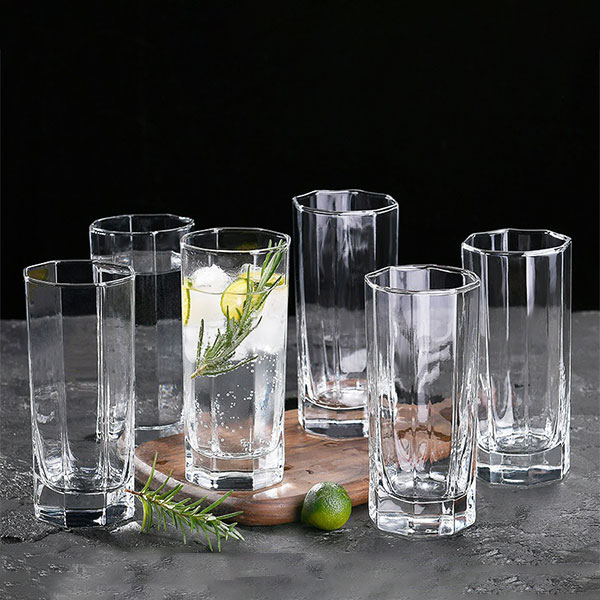
Glass Drinking Cups’ appearance should be smooth, transparent, beautiful, and free of cracks, scratches, and dirt. The cup body should be comfortable to touch and not could damage the skin. There should be no bubbles or stains inside the cup. The oil prints and writing on the cup’s body should be clear and beautiful. Pour hot water into the cup lid and inside the cup and smell it with your nose to see if there is any smell.
Glass Drinking Glass Cleaning Tips
It is best to be washed immediately after each use. If it is too troublesome, clean it at least once a day. You can wash it before going to bed and then dry it. To make your glass look crystal clear, try the following cleaning tips.
- The first one is to use salt water to clean the greasy glass. It is easy to clean, the cup will be brighter and smoother, and it can also be sterilized. Washing the glass with salt water is clean and hygienic.
- The second type: is mixed with water in a ratio of 1:4, used to clean the glass, which can make the glass clear.
- Third: Use lemon to clean the scale. Cut the lemon in half, rub it with salt, then cover the salt-covered lemon cut surface with the cup, rub it back and forth, then rinse it with water.
- Fourth: If guests often come to your home, the glass should be disinfected frequently. Just dilute the disinfectant at 1:200 proportion and put it into a glass. After soaking for 10-15 minutes, rinse with clean water. This can not only remove tea stains but also disinfect them.
- Fifth method: Use plastic wrap and a damp cloth sprayed with detergent to wipe the glass to make the glass that is often stained with oil shine again.When daily cleaning, do not use highly acidic and alkaline solutions to contact the glass.
- Type Six: Use potato peels to help. Put the potato skins in a teacup, add boiling water, cover, and simmer for 5 to 10 minutes, then shake it up and down a few times to remove the tea scale.
Glass Drinking Cups Maintenance
1)Glass Drinking Cups Cleaning And Maintenance
First rinse with warm water, which should be slightly hot touched. For areas where dirt is easily attached to the mouth or bottom, you can use a special cleaning cloth to scrub it with your hands. The cleaning cloth is made of polyester-cotton composite. It has good water absorption not shed lint, so avoid scratches.
Second, after rinsing, place the Glass Drinking Cups upside down on a flat clean cloth and let the water flow naturally to dry it. When placing the cup upside down, be careful not to accumulate water on the bottom of the cup, otherwise, watermarks will easily form.
Third, after the water in the Glass Drinking Cups is dry, wipe it with a clean cloth. When wiping, start from the bottom first and end with the body. Under normal circumstances, when wiping the cup body, only wipe the outside of the cup body, and there is no need to wipe the inside of the cup body.
Finally, the wiped glass can be hung upside down on the cup holder, or placed upright in the wine cabinet with the cup rim facing up. Avoid placing the cup upside down in the wine cabinet. This will easily accumulate an unclean or stale smell in the cup and bowl, avoiding the effect of its use.
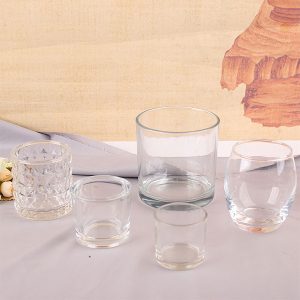
2) Glass Drinking Cups Place And Maintain
Be careful when handling it and try not to hit the glass surface to prevent scratches on the glass surface. It is best to put a tablecloth on the table, which is beautiful and can protect the Glass Drinking Cups. It is best to place the cups in a fixed place and not move them back and forth at will. Place the Glass Drinking Cups in a stable place to prevent them from being accidentally broken.
The Glass Drinking Cups should be stored away from moisture, and stoves. And isolated from chemical reagents such as acids and alkalis to prevent corrosion and deterioration. Taking good care of the glass according to scientific methods can extend the service life of the glass and keep the glass as bright as new. We will also feel better when using the glass.

